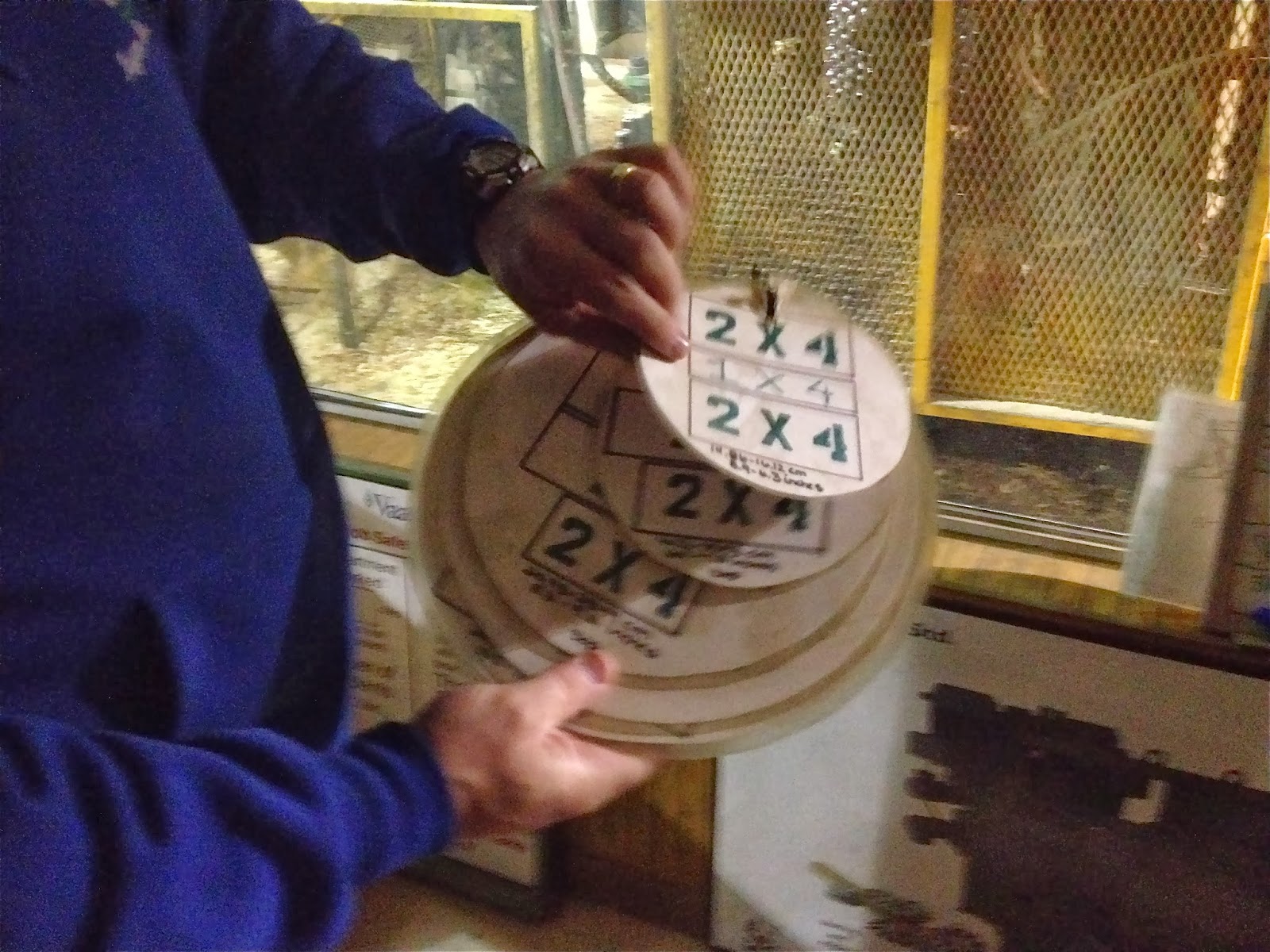The crane sorts the logs it grabs from the trucks according to their species.
Some of the tree types are Douglas fir, Western Larch, Hem-fir, Lodgepole and Ponderosa Pine. As you can see there are no "old growth" trees in the background.
The large crane (not this little arm) puts a group of trees on a self feeding table. The arm above is used by one of the three men in a control room (next photo) to extract any log deemed more than 14 inches in diameter. As I had said in the previous blog, this is a small tree lumber mill and only setup to cut 14 inches or less.
Donna is watching the men as they determine, at a glance, what the species is, approximate size and length. With a push of a button they will send the log to the appropriate place in the mill.
While you can't really see the blade, it has a cover over it, the men have to cut the logs a certain length for a number of reasons I didn't quite understand.
This is one of the blades used in the previous photo for cutting the logs in half. The blade is presently in the sharpening room being...what else, sharpened. This blade was nearly 6 feet tall and seemed a little "over kill" if your only cutting a maximum of 14 inch logs?
The logs then go through a de-barker.
They come out looking a bit naked, wouldn't you say?
From the de-barker the logs run past a computer camera that in a blink of the eye determines how to flip the log for maximum usage. At this point the logs are moving at approximately 600 feet per minute.
Rich is showing Donna and I just what they will get out of each log. As you can see the smallest log will produce two 2 by 4's and one 1 by 4. The larger the log of course means more product.
This what a 14 inch log will be cut into. All the areas outside of the black lines end up as shavings, chips or sawdust.
The log, regardless of it's size is pushed through this cutter at the same 600 feet per minute. It was hard for me to understand the power it takes to rip a solid log into five 12 foot 2 by 4's in less than one second. The two shifts put out nearly 600,000 board feet each and every day.
This is the nerve center for the cutter. As you will see there are many more control centers in the mill which relies on heavy use of computers.
These are just two of the blades that go into the cutter. Just like a automobile transmission, the computers move and adjust the blades quickly to cut certain size logs.
This red light wasn't a good thing. One of the logs tried to piggy-back another log which in turn jams the cutter. It's not uncommon and only took a few minutes to clear.
When the cutter got back to running, the newly cut wood is pushed from the cutter onto a conveyor where it starts its journey for some final steps of sizing, moisture content and grading.
This device detects moisture content for each piece of wood as it travels on the conveyor table.
Even with all the automation, you still need a human eye or hand to keep the line running well.
I think I can finish the mill tomorrow.

















1 comment:
Ha, leave it you guys, in the dead of winter you find a terrific adventure! Really enjoyed the last few entries, reminds me of the tour of Pacific Lumber in Scotia a few years back.
Keep up the great job. Looking forward to blogs of your next 300 adventures….. :-)
Jack
Post a Comment